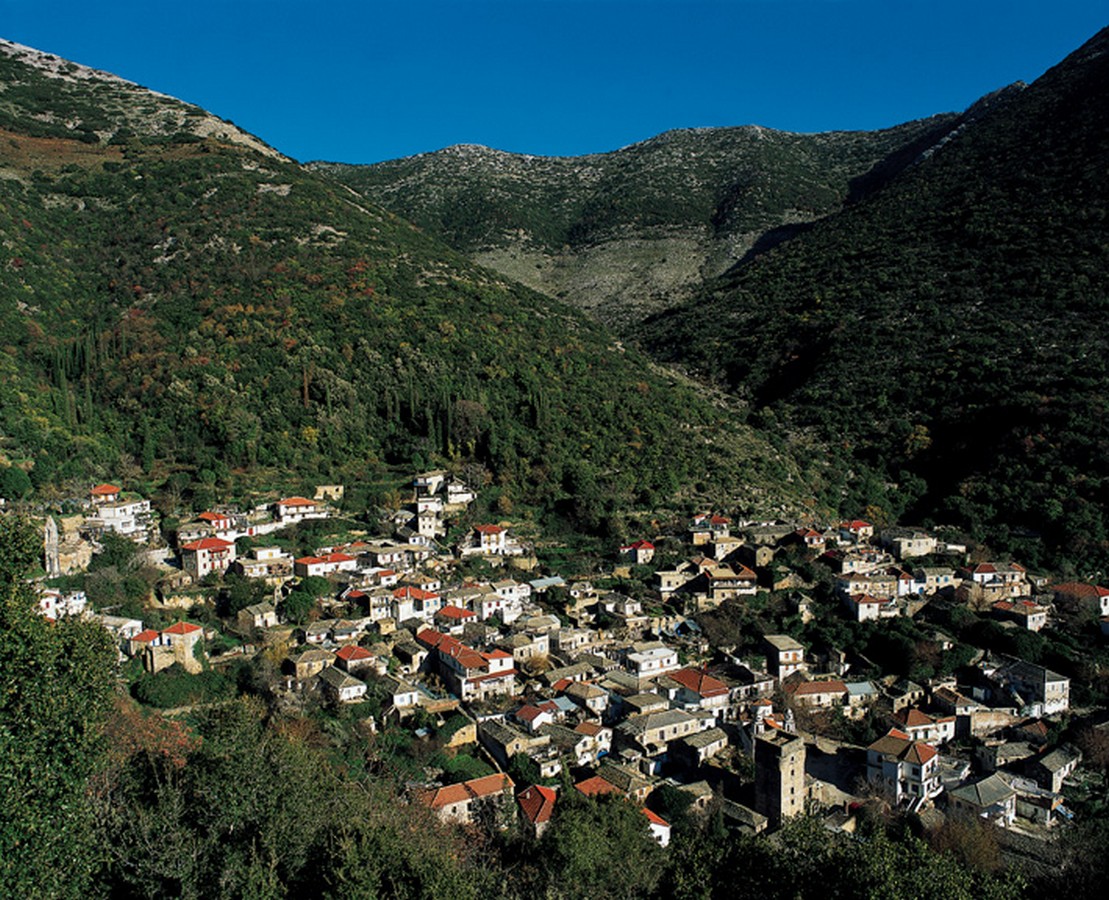Kastania, well protected in a valley at the western foot of Mt. Taygetus, is one of the most important villages in Mani, having retained its apparent medieval character. The dozens of byzantine and post byzantine churches in the village, most of them restored, the restored Dourakis tower looming over the central square, the tower-residences, the narrow alleys and the small stone-built houses, in combination with the threshing floors and the water mills still surviving at the village edge, offer their testimony and help the modern visitors imagine how a thriving medieval village must have looked. Kastania’s strategic location, at the start of the mountain paths that once crossed Mt. Taygetus, was safeguarding the village’s communication with Moreas’ most prominent administrative centres, Mystras and Monemvasia. Wall paintings of exceptional quality have been preserved inside Kastania’s churches, some of the most representative examples of Palaiologian art in the Peloponnese, among them the church of Agios Petros, whose restoration won the 2015 Europa Nostra award. Milia, in the mountains, comprises three scenic settlements, Chora, Xanthianika and Fagrianika. Two byzantine churches of the 13th and 15th centuries, stand testimony of the site’s medieval history. Further south, the existence of byzantine monuments in and around the village of Platsa, reflects the habitation here in the middle byzantine period. Just outside the village, next to the local road, stands the church of Agios Nikolaos at Kabinari; its construction dates perhaps to the 9th-10th century, with wall paintings dated by an inscription to 1336/1337. Three churches at Koumani in Nomitsi are signs of an organised community during the medieval period. The two most important monuments, Agioi Anargyroi (10th century) and Metamorfosi Sotiros (Transfiguration of Christ/ 12th century) are situated on the main road that, already in ancient times, used to connect Exo and Mesa Mani. The village Thalames has been identified with ancient Thalamai, a Laconic city with a renowned sanctuary and dream oracle of Ino-Pasiphae, was a site of pilgrimage even for the Ephors of Sparta. Thalamai would later join the League of free Laconians (Koino ton Eleftherolaconon). A few early byzantine sculpts and inscriptions and two 13th century churches attest that habitation continued in byzantine times. Langada, a typical traditional village of Mani, with its byzantine and post byzantine monuments is an important attraction.


